Some days I like my work, and some days I don’t, but I guess that’s just the way the world is. This love/hate relationship really rears its ugly head when I have to go out and do blower door and Duct Blaster testing on homes. It’s not one of my favorite things to do, but if the weather’s nice and the drive’s not to far, it can end up being a good, and reasonably profitable, day.
But no matter how good things are, climbing up and down ladders to mask ducts with that annoying sticky tape ends up being pretty unpleasant. When carrying a stepladder around to 15 or 20 (or more) registers, climbing up and applying duct mask to them, I am not inclined to sing “My Favorite Things.”
Time to invest
I had seen a few different reusable duct covers over the years that claimed to save time and tape, but until recently, I wasn’t doing enough volume to justify buying them. But with some steady work doing Georgia energy code compliance testing for builders, my creaky old knees were starting to complain.
Walking the exhibit hall at the recent ACI conference, I ran across Vent Cap Systems, a company selling recycled polypropylene covers for grilles and registers. The covers include an attachment for a roller extension that, they claimed, allows you to both install and remove their caps from the floor.
Being assured that I could return them if I was dissatisfied, I broke down and ordered a set of 20 covers, hoping that they would arrive before my next set of homes to be tested. Unfortunately, they didn’t, but I was able to use them a few weeks later on my next test outs.
How they work
Each vent cover is a box, roughly the size of an average HVAC register with a thick foam gasket covering the edge that pushes against the ceiling. There is a string running through a spring-loaded fastener (not unlike one you see on some raincoats or athletic shorts drawstrings), connected to a small plastic hook.
You use their RAT (Remote Attachment Tool) to push the hook up into the register, using it again to depress the ball at the end of the spring and push the cover up against the registers while you hold the string. I’d estimate that about 80% of the time the hook goes into the register slot easily and stays. The other 20% of the time involves trying again, usually accompanied by a little swearing and sweating. After you install the covers, you do your duct test, then go around and use the RAT again to depress the ball, and let the cover drop into your hands. Then you use the RAT yet again to snag the hook out of the register, about another 80% shot on the first try.
One nice little feature they have is a pressure tube tap on one of the covers. You attach the hose to the tap, put the cover up and you are ready to attach it to the reference side of your pressure gauge.
The verdict
Now that I’ve used these covers on over a dozen test outs, I’ve decided that while not perfect, they are quite good, and I’m happy I gave them a shot. I’ve heard rumors that they are working on an improved hook and maybe even a special cover to connect the duct fan to so we can stop climbing ladders altogether. Not sure when that day will come, but I am definitely looking forward to it.
Weekly Newsletter
Get building science and energy efficiency advice, plus special offers, in your inbox.

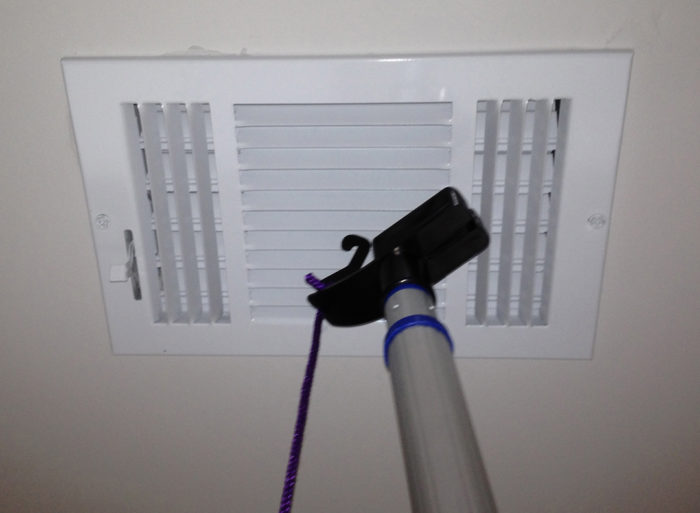




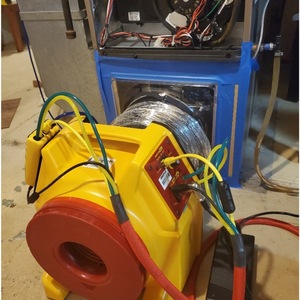
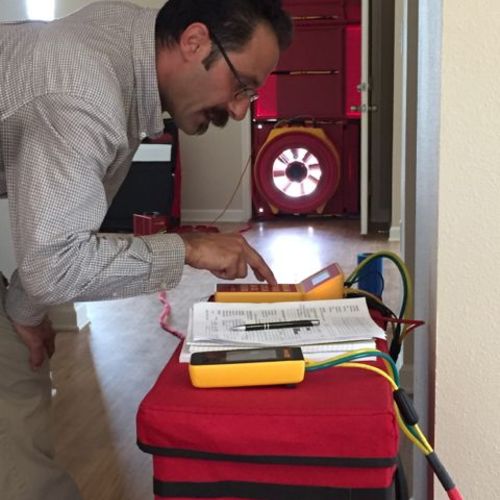
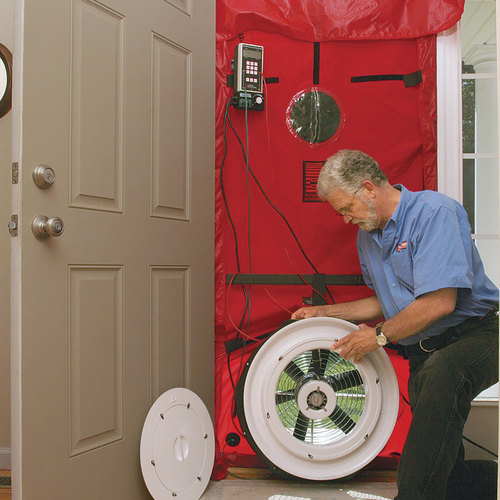
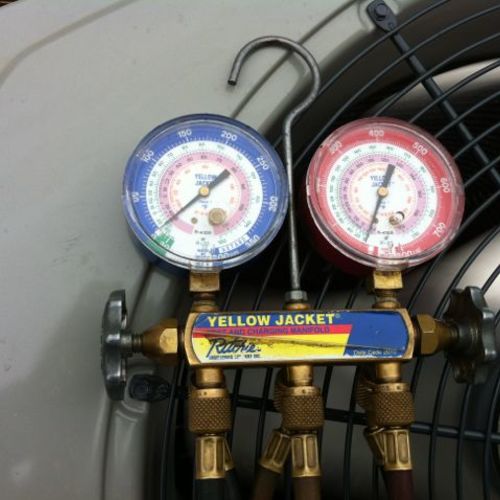






13 Comments
How tight are they?
Carl,
When I reviewed Vent Cap System covers three months ago, a reader named Paul McGovern posted a comment. Paul wrote, "They are useless at rough-in (no ceiling in place) and they can't be secured tight enough to guarantee no leakage even at +25pa. They are held in place by line friction, which is not enough ... camera & smoke stick verify leakage."
I'd be interested to learn whether you've tested these covers for leakage with a smoke pencil.
Paul suggested, "Covers on an adjustable pole, either manufactured or self-made, are more reliable. We started with Tupperware containers, applied self-adhesive weatherstrip to the outside edges, glued drywall sanding pole swivels underneath and inserted adjustable poles. Same procedure only with plywood instead of Tupperware, at rough-in. Works great at fraction of cost. A bit more cumbersome but reliable."
HowTight
I haven't tested them with a smoke stick, nor have I tested one house with both tape and the vent caps, although I test one builder's homes regularly. While they aren't particularly high performance homes, the duct leakage results are fairly consistent between homes and I haven't noticed any big differences in leakage between the two methods. I will check leakage with a smoke stick the next time I do a test and report back.
I agree that they are not appropriate for rough in testing, nor do they work on floor registers, although the company has told me that they are working on a product for that application. As to Paul's comment about them not being able to guarantee no leakage, I don't know if any sealing method can "guarantee" this. There are so many places for a duct system to leak that duct leakage testing tends to be a rough estimate at best in most cases.
I imagine that the amount of leakage of the vent caps as compared to taping has a lot to do with how you tape. There doesn't appear to be any consensus as to exactly how and where to apply the tape. Some people recommend only taping over the grille openings, others suggest taping around the edges onto the drywall for a better seal. I expect that the covers seal about as well as taping only the top of the grilles and not as well as taping to the drywall.
If I feel ambitious one day, maybe I will try all three methods on a single duct system and compare the results.
Thanks, Carl
Carl,
Thanks for the information. I look forward to any further findings you can provide in the future.
Similar Product Available
Hi. My name is Russ King. My company is Sierra Building Science, Inc., based in Sacramento. I started using the "pan and pole" method in the late 90's. We started off with cafeteria trays with weather stripping around the edge and painter poles wedged in place to hold the pans against the registers. In the last few years I have fined tuned the concept to something called Duc-Bloc. You can see pictures at http://www.duc-bloc.com. I will also have a booth at the Sacramento ACI conference this June. Duc-Blocs are a wooden product that we manufacture. We sell them in conjunction with Zip Wall spring loaded poles. The poles, which stay in place, provide the perfect amount of pressure on the pans to create a good seal around the register. We have smoke tested them up to 125 Pa. We also have a pan that holds the duct tester flange against the return grill and easily supports the weight of the connector tube.
Smoke stick
I did a quick test of vent caps today on a test out. I ran the smoke around the perimeters of several caps both pressurized and depress irised to 25pa. I didn't see the smoke move either towards or away from the gasket against the ceiling.
Didn't have time to do both tape and vent cap testing in the same house. When I have time I will try it in another house and report back.
FYI. Posted this comment from my phone on a plane. What a world.
vent caps
Carl, Martin et al ... my first experience with the vent cap was on popcorn ceilings. I could not draw the cover up tight enough to form a good seal. A smoke stick revealed enough leakage to determine it was not reliable enough to trust. The time I saved not climbing the ladder and taping was spent climbing the ladder to check for leakage. Adjustable and/or Spring-loaded poles are the ticket as the pressure is almost limitless and they can be "manufactured" to be smooth with weatherstripping on one side for rough in testing, and boxed with weatherstripping on the other for finished ceilings. Obviously, they don't solve every application but are adequate most of the time
Carl ... when I said "They are useless at rough-in (no ceiling in place) and they can't be secured tight enough to guarantee no leakage even at +25pa." ... I was refering only to leakage at the vent (thought that was obvious).
Long time User
I've been using Vent Cap Systems for over a year doing test outs and have found them to be a lifesaver. However when we originally purchased them in November of 2010 we were not impressed with the installed elastic cord size because the pans did not seal well to the ceiling so we replaced them all with thicker cords that required enlarging the hole through the fastener. With these heavy duty elastic cords I conducted several tests on my own duct system against using tape and found that Vent Cap Systems actually provide a better seal resulting in a slightly lower CFM@25 than using duct mask.
I’ll never go back to using duct mask, although I do carry several rolls just in case, and preach the usefulness of Vent Cap Systems to every duct sealing contractor I work with.
one more comment...
good idea, Ben ... I could see that working. One additional problem/ concern on the vent cap system is that the more pressure exerted to pull the vent cap up, the more pressure exerted trying to pull the vent cover down. Anyone EVER run into a vent where the screw missed the flange or got stripped? NOW it has become OUR problem. We bought it.
Stik'n with my "pan & pole".
RE: "Friction Hold"
Original Vent Caps were designed for the mandated negative pressure test in Austin, TX. They simply needed a way to stay near the vent until the testing fan kicked on perfecting the seal. Since that time, custom machined aluminum plungers and stronger springs have replaced the old "backpack" style fasteners. In addition, the cords are now rigid and longer. The short video at http://bit.ly/KggUTX shows the strength of the new fasteners (yes, that is Waylon Jennings playing in the background). It's overkill for 25pa testing but I wanted confidence when setting them at a distance. I know they're cheaper and easier than lugging around 20 - 12' poles, BUT as long as you're not using tape more power to ya'!
Check out our newest testimonial from Energy Star's 2012 Partner of the Year - DuctTesters on the website at http://www.ventcapsystems.com/testimonials/
PS. I'm more than happy to sell additional Pole RATs with a set of Vent Caps. Pole RATs (Remote Attachment Tools) are threaded to attach to any standard pole. You can use your pole AND still have Vent Cap's superior rigid construction and seal - complete with a full one year warranty.
PPS. Version that seals at rough-in coming. Stay tuned. . .
On a slightly different topic
Does anybody know of a cheap, simple tool to gauge air flow out of a register? Just enough to know if the flow is about the same for several registers, for a quick & dirty tuning of a forced air system.
I'm visualizing something L-shaped, one leg being a horizontal plane, perpendicular to the airflow, the other leg pointing down, weighted to balance the horizontal leg. Air flow pushes the horizontal leg up or down, opposed by the weight of the vertical leg. An angular scale, calibrated with a more sophisticated instrument,would give you a crude measurement of relative air flow.
Response to Robert Fankhauser
Robert,
I answered your question in two of my blogs: Designing a Good Ventilation System and Duct Leakage Testing.
The most famous answer to your question was provided by Don Fugler, who invented the garbage-bag test. Other methods are suggested in my round-up as well; check the links for more information:
"Anyone who commissions a ventilation system needs to learn how to measure airflow. Manufacturers offer an array of accurate (and expensive) instruments to measure airflow. However, builders who need to troubleshoot problems may be interested in several low-cost methods of measuring airflow:
The August 2002 issue of Energy Design Update describes how to build a homemade flow hood using a cardboard box and a $90 digital anemometer.
Two Lawrence Berkeley National Laboratory engineers, Iain Walker and Craig Wray, have written a paper describing a method of measuring airflow with a “calibrated” laundry basket and a manometer.
Terry Brennan promotes a method of measuring bath exhaust fan airflow with a cardboard box and a credit card.
The easiest way to measure airflow at a supply register is the garbage bag technique developed by Don Fugler of the Canada Mortgage and Housing Corporation."
Air Flow Testing
Never done it myself, but I understand the garbage bag airflow test is pretty accurate: http://www.cmhc.ca/en/co/maho/yohoyohe/inaiqu/inaiqu_003.cfm
Testing Airflow w/ Garbage Bags and Credit Cards
Excellent answers- thanks.
Log in or create an account to post a comment.
Sign up Log in